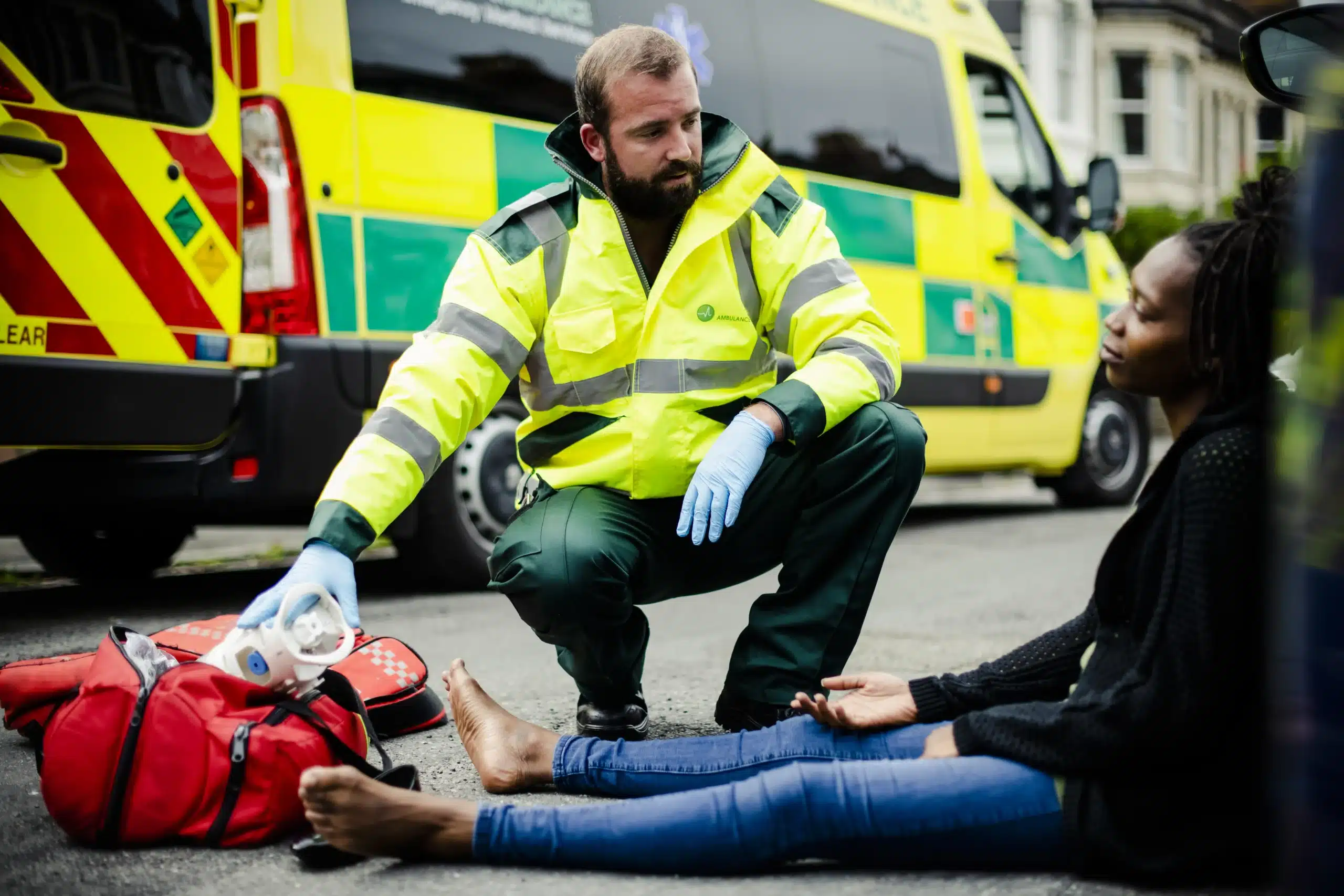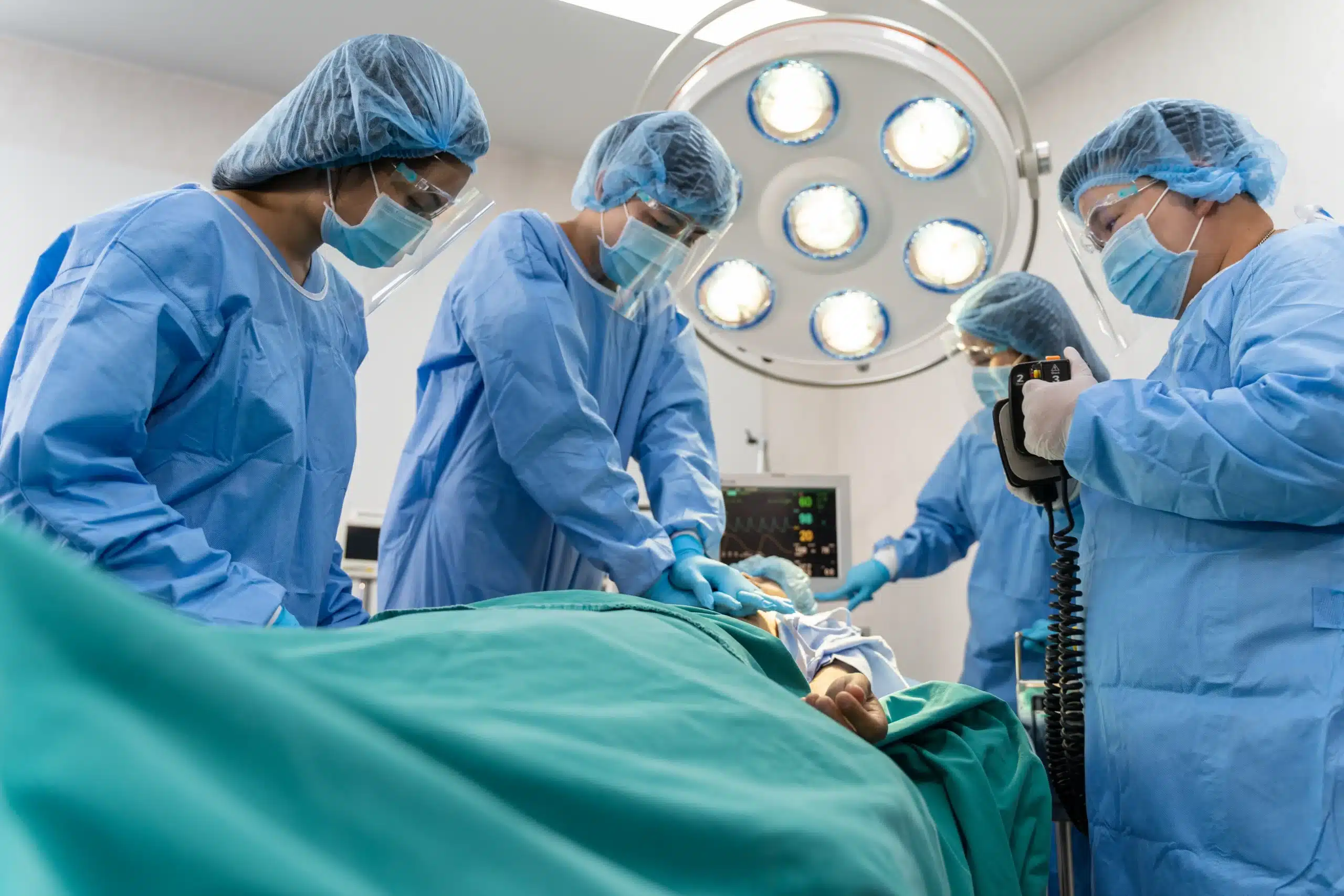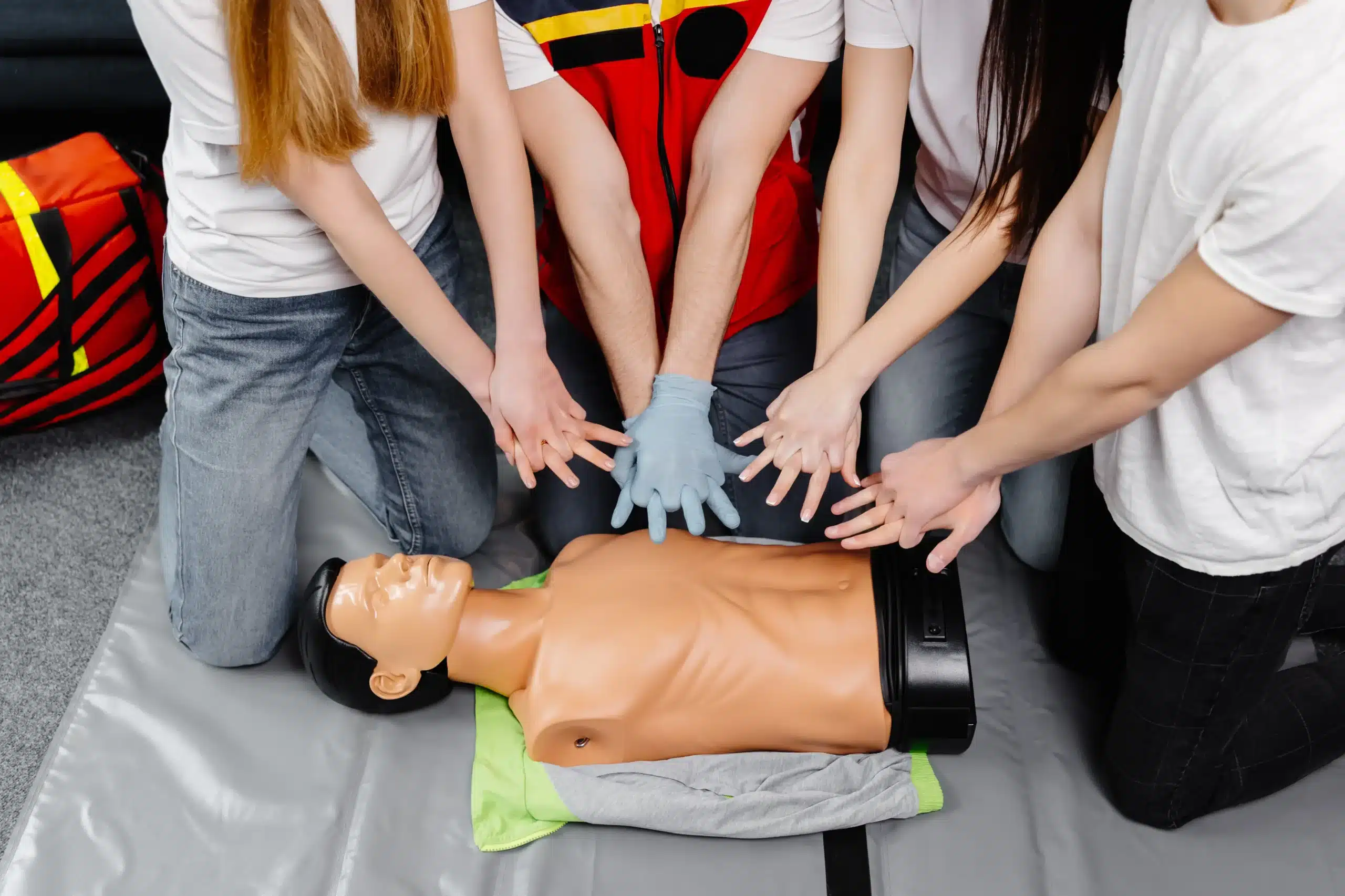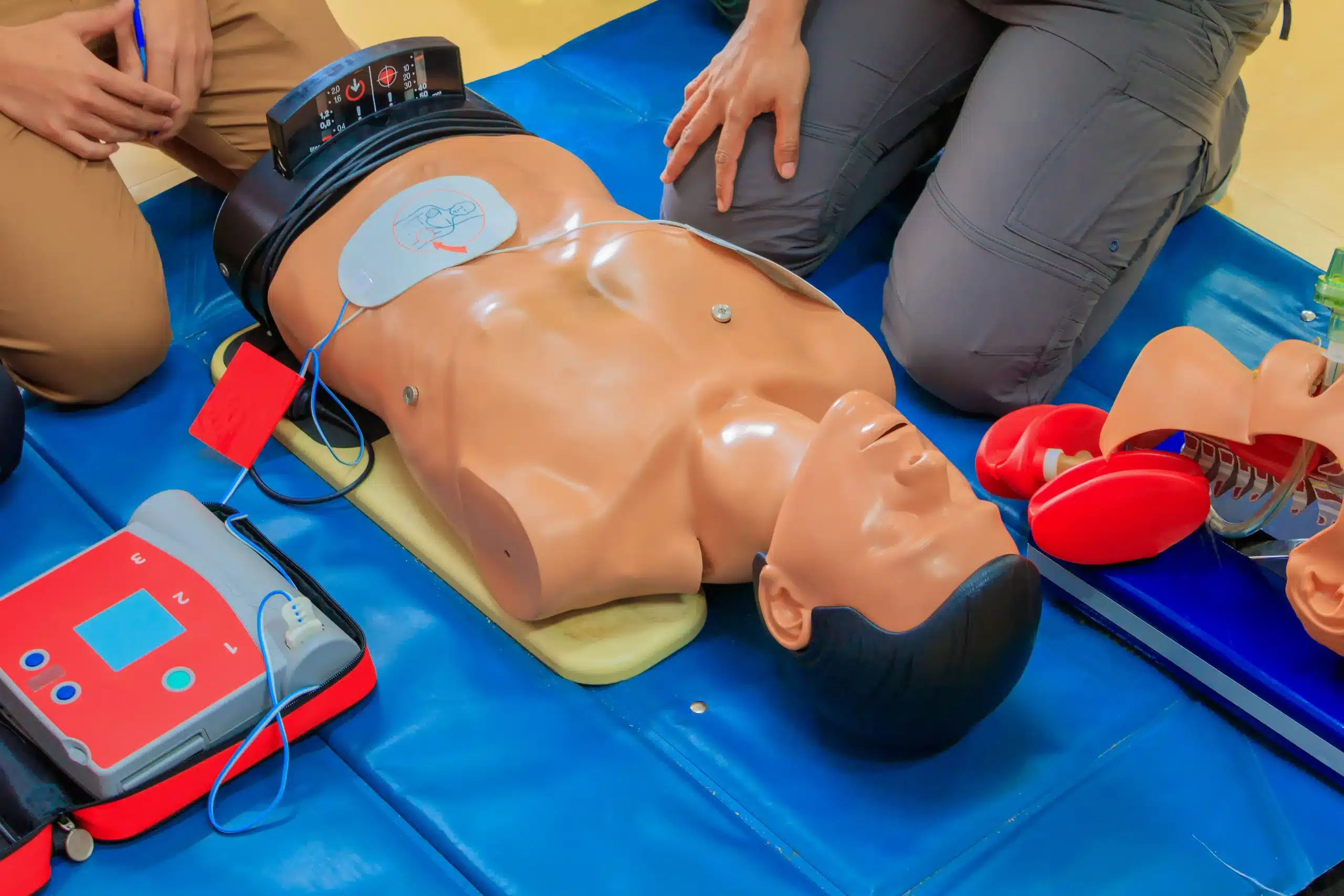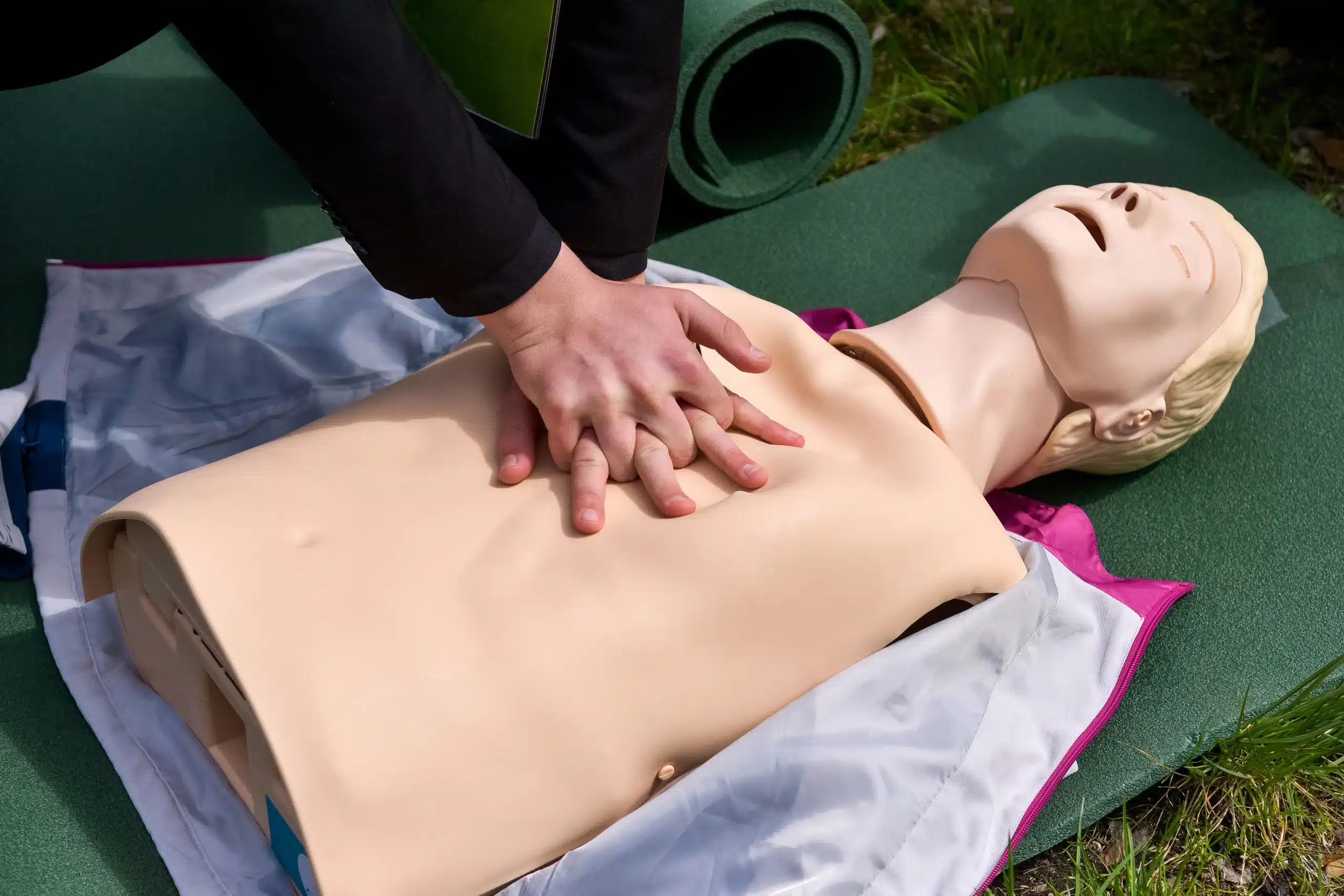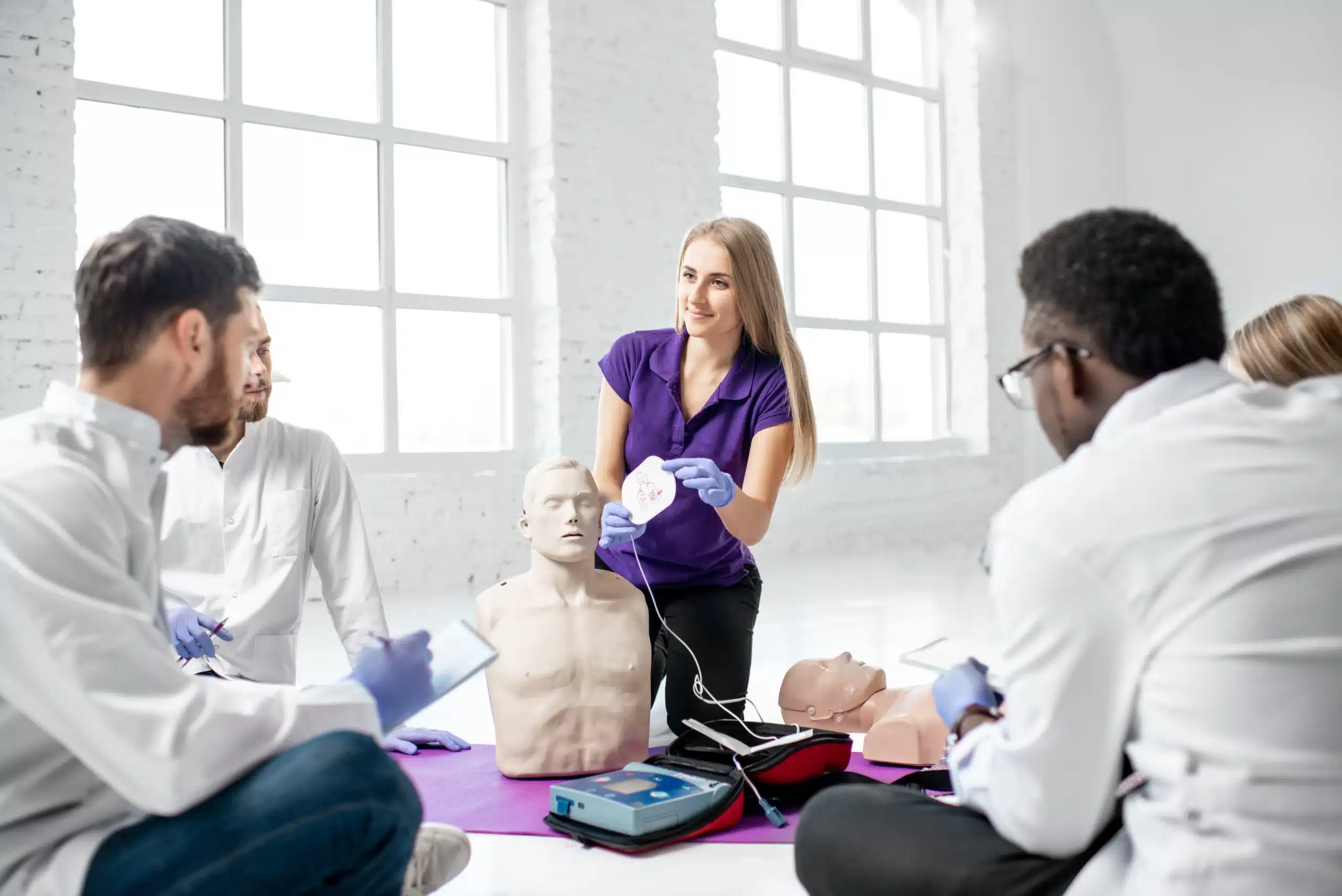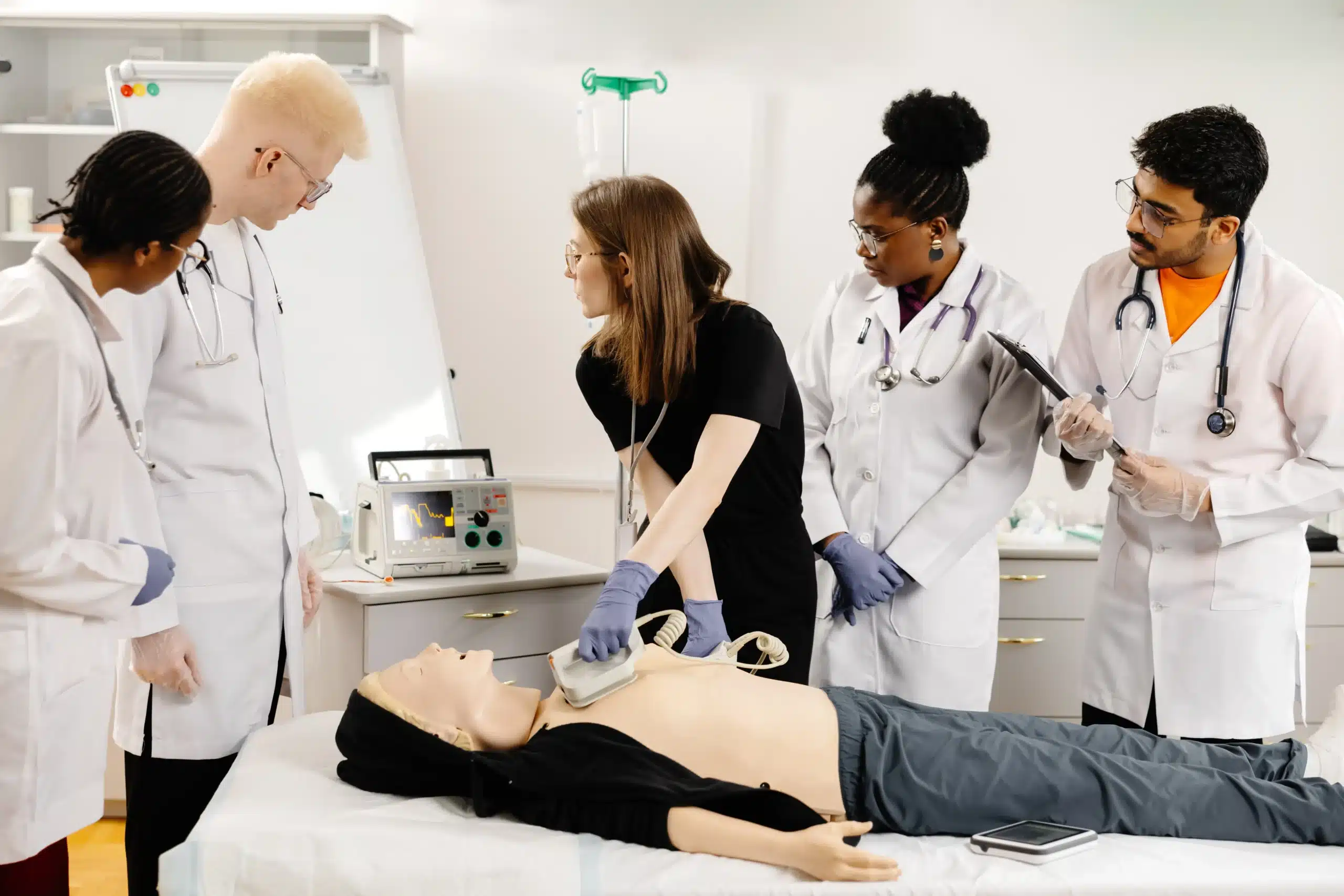Think about all the activities kids get into—running, jumping, climbing, exploring. While we encourage their adventurous spirits, it’s also our responsibility to ensure their safety. Knowing pediatric CPR and first-aid can give you peace of mind and empower you to act quickly if an accident occurs. This guide will cover the essentials of pediatric CPR and first-aid in Elk Grove, including the key skills, certification process, and local training options. Whether you’re a parent, grandparent, teacher, or simply someone who wants to be prepared, this information will help you protect the children in your life.
Key Takeaways
- Pediatric CPR and first-aid training empowers you to act: Equipping yourself with these skills allows you to confidently respond to emergencies, potentially making a life-saving difference for a child. Look for comprehensive training that covers various scenarios, from choking and cardiac arrest to common childhood injuries.
- The right training program matters: Seek out qualified, experienced instructors and programs with ample hands-on practice. Consider factors like cost, schedule flexibility, and class size to find the best fit for your needs. AHA-certification ensures the training aligns with established guidelines.
- Preparation and continued learning are key: Review any pre-course materials, actively participate during training, and don’t hesitate to ask questions. Regular recertification keeps your skills sharp and your knowledge current, ensuring you’re always prepared.
What is Pediatric CPR and First-Aid?
Pediatric CPR and first-aid training equips you with the skills to respond to emergencies involving infants and children. It covers life-saving techniques, from CPR for choking and cardiac arrest to first-aid for common childhood injuries and illnesses. These specialized skills are crucial for parents, caregivers, educators, and anyone who regularly interacts with young children. Knowing how to react can make a profound difference. Elk Grove CPR Classes offers comprehensive Pediatric CPR training designed to empower you with the knowledge and confidence to act when a child’s life is at stake.
What Makes Pediatric CPR Different?
Pediatric CPR differs significantly from adult CPR. For infants, CPR involves chest compressions and rescue breaths, but the technique uses finger compressions instead of the palm of the hand. The depth of compressions is also shallower for infants and children. These modifications are essential to avoid causing injury. Our CPR courses cover these crucial distinctions, ensuring you’re prepared to handle pediatric emergencies.
Essential First-Aid Skills for Children
Beyond CPR, pediatric first-aid encompasses a broader set of skills. These include recognizing and responding to choking, allergic reactions, burns, poisoning, and other common injuries. Our first-aid training covers these essential skills, providing the knowledge and practical experience to handle a range of situations. We also emphasize prevention strategies, empowering you to create safer environments for children. This comprehensive approach ensures you’re well-prepared to protect the children in your care.
Find Pediatric CPR and First-Aid Training in Elk Grove
Finding the right pediatric CPR and first-aid training is essential for anyone caring for children. Elk Grove offers several options with various course formats, schedules, and prices. Let’s explore some local providers.
Elk Grove CPR Classes
Elk Grove CPR Classes offers a range of safety training courses, including CPR, first-aid, BLS, ACLS, and PALS. They provide online learning and in-person skills sessions for flexible certification. You can often receive same-day certification cards after completing the course and skills check. Visit their site for details on CPR classes in Elk Grove and group discounts, a great option for families, schools, or community groups.
Other Local Providers
Several other organizations offer pediatric CPR and first-aid training in the area:
Star CPR Sacramento
Star CPR Sacramento provides AHA-certified training in CPR, first aid, BLS, and AED. Located in Elk Grove, they emphasize hands-on training for confident skill application.
Everyday Heroes Training Center
Everyday Heroes Training Center offers American Heart Association certifications, including first aid, CPR/AED, BLS, ACLS, and PALS. Serving Elk Grove and providing onsite courses throughout Northern California, they offer convenient training options. Visit their website for details on skills testing and certifications.
Professional CPR
For at-home or in-office training, consider Professional CPR. They offer on-site classes covering various topics, including pediatric first aid. Learn more about their Elk Grove CPR, BLS, AED, and first-aid classes.
American Red Cross Elk Grove
The American Red Cross also offers CPR/AED classes in Elk Grove with in-person, online, and blended learning options. This guide offers more information on their programs.
Learn Key Skills and Get Certified
Knowing how to respond to medical emergencies can make all the difference. Pediatric CPR and first-aid certification equips you with the skills to assist infants and children effectively. Let’s explore what you’ll learn and how to get certified.
What Will You Learn in a Course?
Pediatric first-aid and CPR courses cover essential skills, teaching you to recognize and respond to breathing emergencies, choking, and cardiac arrest in infants and children. You’ll also learn how to manage injuries, including handling bleeding, burns, fractures, and other common pediatric injuries. For example, a Heartsaver First Aid class, like the one offered by CPR Training Plus, covers providing first aid for adults, children, and infants. The Pediatric First Aid course at Everyday Heroes Training Center meets California EMS Authority requirements for childcare providers.
Get Certified: Process and Requirements
Certification typically involves completing a written exam and a practical skills test to ensure you understand the material and can perform the techniques correctly. Many providers, such as Star CPR Sacramento, issue AHA certification cards the same day you complete the class. The AHA offers various courses, from basic CPR to more advanced certifications like BLS and ACLS, each with specific requirements. Review our course preparation materials to get started.
Why Recertify Regularly?
Guidelines and best practices for CPR and first aid change periodically. Recertifying ensures your skills and knowledge are current. The Red Cross emphasizes staying current with your certification. Regularly reviewing the material reinforces your confidence and preparedness for emergencies. We offer a low price guarantee and discount group classes to make staying certified more accessible.
Choose the Right Training
Finding the right pediatric CPR and first-aid training involves considering a few key factors. Take the time to research and select a program that meets your specific needs and learning style. This will ensure you receive high-quality instruction and feel confident responding to emergencies.
Key Features to Consider
Think about what matters most in a training program. Do you need a same-day certification card? Is cost a major factor? Elk Grove offers a variety of CPR training providers, so explore the range of course types, schedules, and price points. Look for programs with flexible scheduling options like weekend or evening classes. Also, consider the class size—smaller classes often allow for more personalized instruction and feedback. Finally, check if the program offers continuing education credits if relevant to your profession.
Instructor Qualifications
The instructor’s qualifications are crucial for effective training. Look for certified instructors with extensive experience in pediatric emergency care. Instructors certified by nationally recognized organizations like the American Heart Association ensure the training aligns with established guidelines. An experienced instructor can provide real-world insights and answer your specific questions, making the learning experience more valuable. Reading reviews or testimonials from previous students can also give you a sense of the instructor’s teaching style and effectiveness.
Hands-On Training Opportunities
Hands-on practice is essential for mastering CPR and first-aid skills. Choose a program that emphasizes practical training, including demonstrations, simulations, and opportunities to practice on mannequins. Star CPR is one example of a provider offering hands-on training. This experience will build your muscle memory and confidence in performing the techniques correctly during a real emergency. Ask about the student-to-mannequin ratio to ensure ample practice time. The more you practice, the more prepared you’ll be to respond effectively.
Register for a Class: Costs and Schedules
How to Sign Up
Finding the right Pediatric CPR and First-Aid class in Elk Grove is straightforward. Start by exploring local providers like Elk Grove CPR Classes and comparing course types, schedules, and prices. Think about what works best for your budget and learning style. Elk Grove CPR Classes offers a variety of courses, including American Heart Association BLS and ACLS, to meet diverse needs. Check their website for upcoming classes that fit your availability. Many providers offer online registration, making signing up quick and easy.
Typical Costs and Discounts
The cost of Pediatric CPR and First-Aid training varies depending on the provider and the type of course. A basic Heartsaver First Aid class, covering essential skills for adult, child, and infant emergencies, typically costs around $65. Look for providers with a low price guarantee, like Elk Grove CPR Classes, to ensure you’re getting a competitive rate. Also, inquire about potential discounts. Elk Grove CPR Classes offers discounts for group classes, which can be a great option if you’re signing up with friends, family, or colleagues.
Flexible Class Options
Many training centers understand that people have busy schedules. To accommodate this, they offer a range of class times and formats. Some providers, like Elk Grove CPR Classes, offer blended learning with online courses and in-person skills tests. This allows you to study at your own pace and then demonstrate your skills practically. Check with various providers to see what options they have available. For in-person, hands-on training, consider providers like Star CPR Sacramento or explore the various certification and renewal courses offered by Everyday Heroes Training Center. Before registering, review any course preparation materials provided by the training center to ensure you’re ready. Many providers offer same-day certification cards upon successful completion, so you can use your new skills right away.
Why Learn Pediatric CPR and First-Aid?
Knowing how to respond to a medical emergency involving a child can be incredibly empowering. Pediatric CPR and first-aid training equips you with the skills and confidence to act quickly and effectively when a child’s life might be on the line. Whether you’re a parent, caregiver, or simply want to be prepared, these courses offer invaluable benefits.
Build Confidence in Emergencies
Emergencies involving children can be incredibly stressful. Learning pediatric CPR and first-aid can build your confidence to handle these situations. Instead of feeling helpless, you’ll have the skills to assess the situation, provide immediate care, and potentially save a life. This confidence can make all the difference in a critical moment. Knowing what to do can help you stay calm and focused, allowing you to provide better care for the child. Taking a CPR class is the best way to prepare for these situations.
Handle Common Pediatric Emergencies
Children are naturally curious and active, which unfortunately makes them prone to accidents. Pediatric first-aid courses teach you how to respond to common childhood emergencies, from minor cuts and scrapes to more serious situations like choking, allergic reactions, and burns. Understanding how to handle these incidents can prevent further injury and ensure the child receives the appropriate care until professional medical help arrives. For example, knowing how to clear a child’s airway if they’re choking can be life-saving. Similarly, understanding the signs of an allergic reaction and how to administer an epinephrine auto-injector can be crucial. More information on how to prepare for your course can be found on our website.
Meet Childcare Requirements
In many states, childcare providers are required to have pediatric CPR and first-aid certification. This requirement ensures that professionals caring for children have the necessary skills to respond to medical emergencies. If you’re considering a career in childcare, completing these courses is often a prerequisite for employment. Even if it’s not mandatory, having these certifications demonstrates your commitment to child safety and can make you a more competitive candidate. Elk Grove CPR classes meet the California EMS Authority requirements for childcare providers. See our low price guarantee.
Prepare for Your Class
Getting ready for your pediatric CPR and first-aid class can make a real difference in how much you learn and how confident you feel. Knowing what to expect, clearing up any confusion, and using a few smart study strategies will set you up for success.
What to Expect During Training
Pediatric first-aid and CPR classes cover the skills needed to respond to emergencies involving infants and children. Expect a combination of interactive lectures, demonstrations, and hands-on practice. You’ll learn to recognize the signs of choking, cardiac arrest, and other emergencies. The Pediatric First Aid course in Elk Grove meets California EMS Authority requirements for childcare providers, ensuring your training aligns with state standards. With a range of CPR training options in Elk Grove, you can find a class that fits your schedule and budget.
Common Misconceptions
It’s important to address some common misconceptions about CPR. One myth is that CPR always revives someone. While CPR is a life-saving technique, it’s essential to have realistic expectations. Another misconception is that you must be certified to perform CPR. Understanding CPR myths empowers anyone to take action in an emergency, even without formal certification. Remember, any attempt to help is better than no attempt at all.
Tips to Maximize Your Learning
A few simple steps can help you get the most out of your training. Review any pre-course materials provided. This will give you a foundation for the topics covered in class. During the hands-on portion, actively participate. Working with CPR training mannequins helps build your muscle memory and confidence as you practice chest compressions and rescue breaths. If you’re learning with friends or family, consider hosting a CPR party for a more comfortable learning experience. Don’t hesitate to ask your instructor questions. The more you engage, the more you’ll learn.
Related Articles
- CPR Training in Sacramento: Your Guide – Elk Grove CPR Classes
- Pediatric Advanced Life Support (PALS) in Elk Grove – Elk Grove CPR Classes
- CPR & First Aid Classes in Sacramento: Your Guide – Elk Grove CPR Classes
- First-Aid Training in Sacramento: A Complete Guide – Elk Grove CPR Classes
- CPR Classes in Elk Grove: Your Complete Guide – Elk Grove CPR Classes
Frequently Asked Questions
How do I choose the right pediatric CPR and first-aid class? Consider factors like cost, schedule, class size, instructor qualifications, and the balance of lecture and hands-on practice. Look for programs offering certification recognized by organizations like the American Heart Association. Also, think about whether you prefer online, in-person, or blended learning formats. Reading reviews from past students can offer valuable insights.
What if I’m nervous about performing CPR in a real emergency? It’s completely normal to feel apprehensive. That’s why hands-on practice during training is so important. The more you practice on mannequins, the more confident you’ll become. Remember, any attempt to help is better than no attempt at all. Your training will equip you with the skills and knowledge to act, even under pressure.
Is there a difference between CPR for infants and children? Yes, there are key differences. Infant CPR involves using two fingers for chest compressions, while child CPR uses the heel of one or two hands, depending on the child’s size. The depth of compressions also varies. A pediatric CPR course will cover these crucial distinctions in detail.
How often do I need to recertify in pediatric CPR and first aid? Certification typically lasts for two years. Recertifying ensures your skills and knowledge are up-to-date, as guidelines and best practices can change. Regularly refreshing your training keeps you prepared and confident in your ability to respond effectively.
What if I have other questions about pediatric CPR and first aid? Don’t hesitate to reach out to a certified training provider. They can answer your specific questions and provide additional resources. They can also help you choose the right course and guide you through the certification process.
